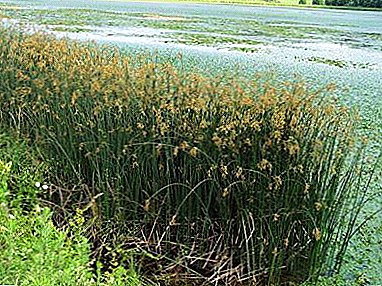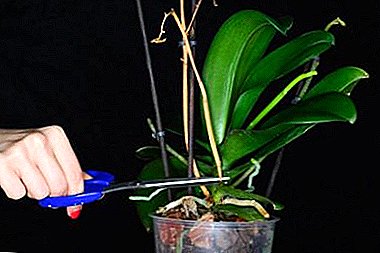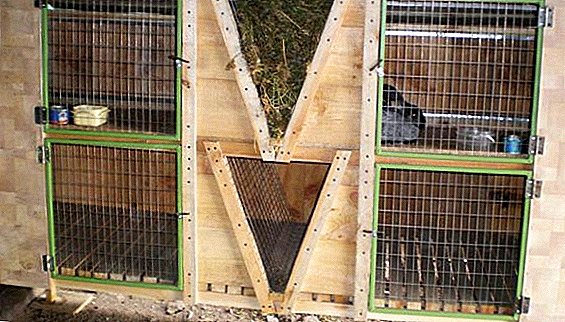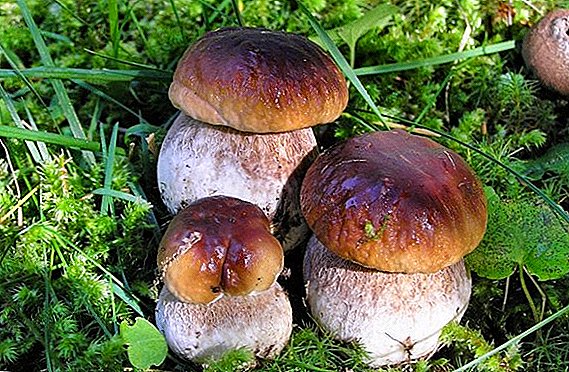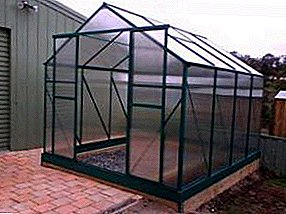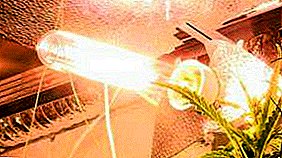
Necessary for the growth and development of the plant energy is drawn from sunshine. But it is the sun that is lacking in winter for vegetables or flowers grown in greenhouses.
To compensate for this disadvantage, farmers are forced to use special light sources. Among them, a special niche occupied sodium lamps.
Characteristics of sodium lamps for greenhouses
To date, the lamps have not been created, which could create an imitation of sunlight by 100%. Each of them is dominated by only one emission spectrum. 
As for seedlings, during the growing season, it especially needs a blue and red spectrum. The first is needed for the growth and full development of seedlings, and the second, in turn, stimulates their flowering and subsequent fruiting.
For each period, respectively, the backlight needs its own.
Operating principle
Sodium sodium lamps for greenhouses are classified as gas discharge. Gas-discharge devices are actively used not only in greenhouses, but also in squares, roads, streets, in warehouses and in industrial premises. The gas discharge medium inside the devices is created using sodium vapor, glowing in red-orange color.
A lamp bulb is a cylindrical tube made of refractory glass. It is filled with a mixture of mercury and sodium. It is a burner made of aluminum oxide.
In order to launch such devices and regulate the action of current in them, there is a control gear. In addition, you will need a start-controlling electronic device with the following advantages:
- Thanks to his work, the power is stabilized, so the lamps last longer.
- Power consumption is reduced by almost 30%.
- The frequency of the current increases, the light output increases.
- No flicker effect.
Types of lighting
 Sodium lamps are divided into two categories: high and low pressure. In the plant used high pressure sodium lamps for greenhouses.
Sodium lamps are divided into two categories: high and low pressure. In the plant used high pressure sodium lamps for greenhouses.
NLVD are divided into the following types:
- DNAT - These are ordinary arc lamps with powerful light radiation. One of them is enough to light a small vegetable garden construction.
The emission spectrum of such devices can be changed by combining them with other types.
- DNA - light sources with a mirror reflective layer. The layer is applied to the inner surface of the flask. It is effectively protected from adverse weather conditions and mechanical effects and increases productivity. Sintered electrodes are located inside the flask.
They provide high efficiency and reduce power consumption. In comparison with the DNAM reflector lamps are not powerful enough.
- DRI and DRIZ - the most advanced devices for greenhouses. Metal halide devices are resistant to current drops, they long servethey have the most optimal spectrum radiation required for the growth of seedlings, and high efficiency.
But they are not without some flaws, the most important of which is the cost, which is quite high for the average consumer. Plus, for their use requires a special cartridge. This makes it difficult to replace broken lamps.
A photo
The photo shows sodium lamps for greenhouses:





Features NLVD
The luminous flux, luminous efficiency and the duration of burning depend on the power of NLVD. Color rendition is improved through the use of luminescent materials together with gas mixtures.
Concerning powerthen it should fit the application. To illuminate the seedlings are selected fixture parameters of 70-400 W, which can serve in greenhouses in any season of the year.
Bulbs with higher rates simply burn the vegetables. Therefore, before buying them necessarily consult with a specialist.
Advantages and disadvantages of high-pressure sodium lamps
NLVD have many advantages:
- They are economical. They consume a little electricity and are affordable.
- Durability: serve about 20,000 hours.
- High light output in comparison with simple incandescent bulbs.
- Heat radiation. When the glow NLVD emit a large amount of heat. Therefore, it is possible to save a lot on heating a greenhouse, especially in the period of cold weather.
- The red-orange emission spectrum allows speed up flowering and fruit formation, which contributes to the emergence of a rich harvest. And the blue part, as a rule, provides natural lighting.
- High efficiency (thirty%). It exceeds the rate of most sources of artificial lighting.
Attention! NLVD is best used in the final stages of growth of seedlings. If you provide light in the early stages, the shoots will begin to grow faster, stretch out and form long stems. Proper growth can be achieved by combining the operation of devices with metal-halogen lighting sources.
Disadvantages NLVD
- Big minus NLVD - strong heatbesides, they flare up for at least several minutes. Their coverage attracts insect pests to greenhouses that cause visible damage to seedlings.
- NLVD are unsafe. The filler is a mixture of mercury and sodium. Accidentally breaking the lamp, you can put an end to the entire grown crop.
- Device operation depends on voltage.. In the case when its fluctuations in the network exceed 10%, such lamps inside greenhouses are not recommended.
- In the cold lighting lose effectiveness. Therefore, their use in an unheated shelter is limited.
Conclusion
If you are used to cultivating vegetables, flowers and berries in a greenhouse all year round, sodium lamps will become an important tool for you with a lack of natural lighting.
They are recognized as one of the most economical and at the same time effective methods of artificial lighting, allowing the gardener to get a rich harvest.



